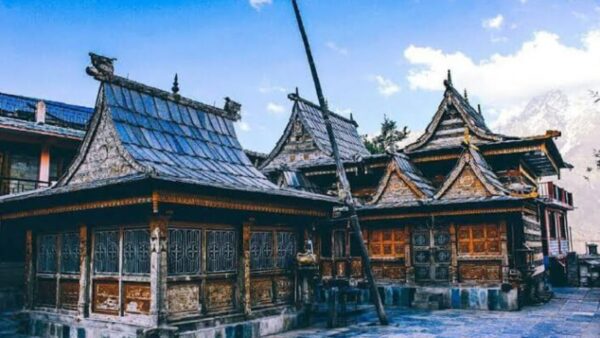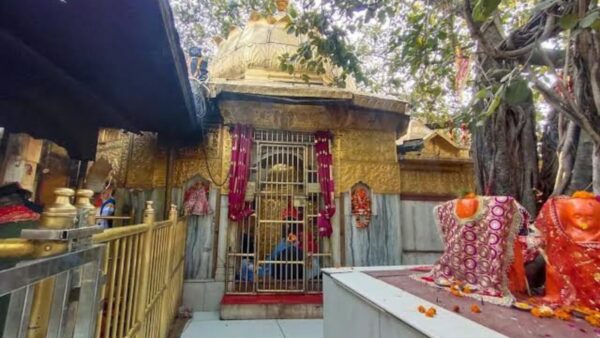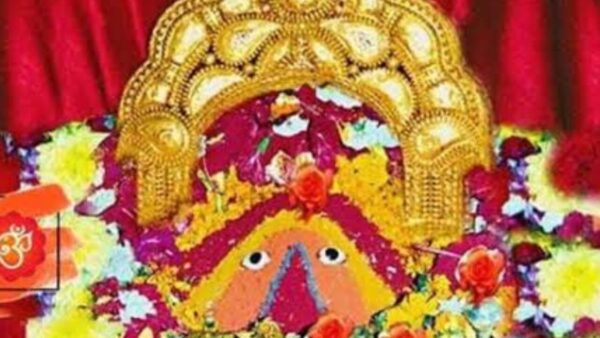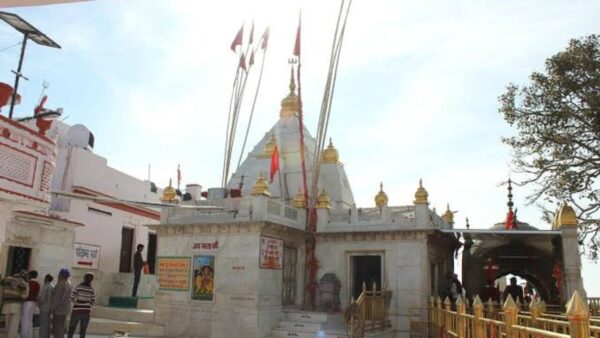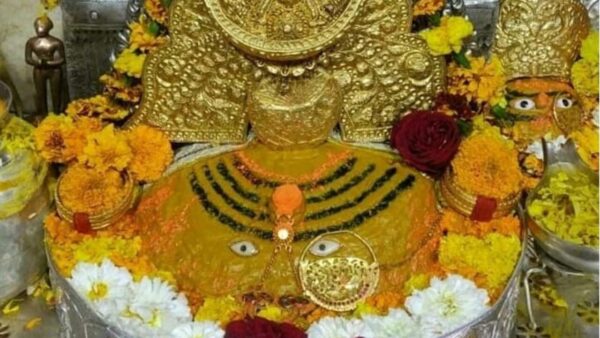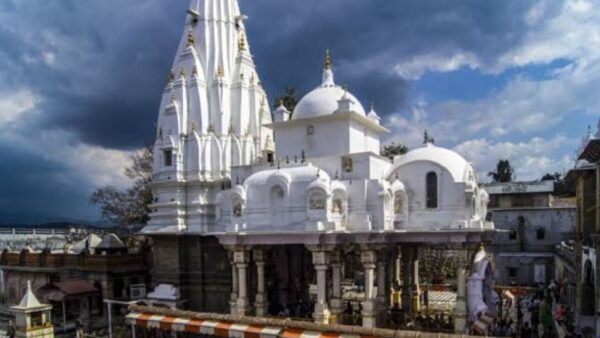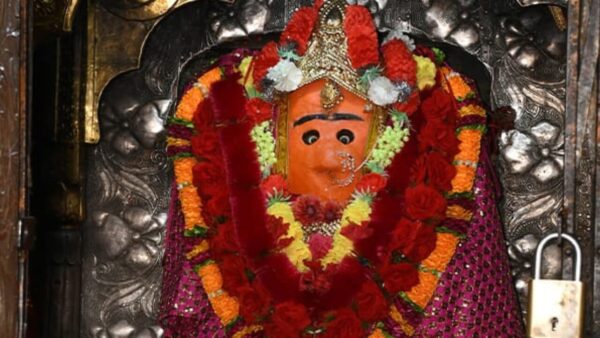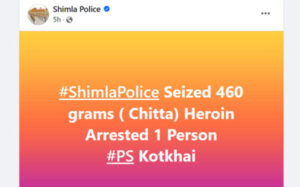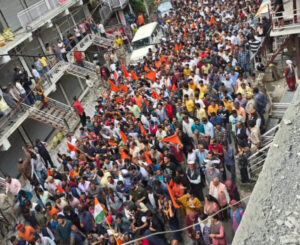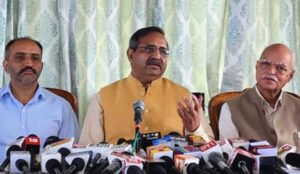Shakti Peeth in Himachal Pradesh : A Pilgrimage to the Divine Feminine
Shakti Peeth in Himachal Pradesh : Himachal Pradesh, nestled amidst the majestic Himalayas, is not just a paradise for nature lovers but also a sacred land for devotees of the Divine Feminine. Renowned for its grandeur and spiritual aura, Himachal is also home to several revered Shakti Peeths. It is believed that these holy sites hold immense spiritual power. These sacred sites, according to Hindu mythology, are believed to be the locations where the body parts of Sati Devi, consort of Lord Shiva, fell after her self-immolation. Imbued with immense divine energy, these Shakti Peeths are pilgrimage destinations for countless devotees seeking blessings and spiritual enlightenment. Himachal Pradesh boasts a number of these holy shrines, each with its unique legends and architectural splendor.
This article delves into the significance of Shakti Peeths in the state, exploring their historical and mythological context, and providing insights into the profound experiences they offer pilgrims.
Jwala Devi Temple, Kangra
Located in Kangra district of Himachal Pradesh, Jwalaji is one of the most revered Shakti Peethas in India. It is situated in the lap of Shivalik range of Kangra valley called “Kalidhar”. History says that, Raja Bhumi Chand Katoch of Kangra, a great devotee of the goddess Durga, dreamt of the sacred place and sent people to find the whereabouts of the site. The site was traced and a temple was then built at that location. It is believed that the eternal flame here is a manifestation of Goddess Sati’s divine energy. Goddess Sati’s tongue is believed to have fallen at the very place where Jwala devi Temple is now situated. The Tongue of Goddess is represented by Holy Flame or Jwala that is perpetually burning. The temple also houses nine other natural gas flames, each considered a different form of the Goddess.
Scientists predicted that an underground volcano exists beneath the temple and the volcano’s natural gas burns through the rock as the flames. Akbar, the erstwhile emperor of the Mughal dynasty, once tried to extinguish the flames by covering them with an iron disk and even splashing water on them, but the flames blasted through all these efforts. Akbar then presented a golden parasol (chhatri) to the shrine. However, the parasol fell suddenly and the gold formed another metal that is still unknown to the world, which strengthened his belief in the goddess even more.
This temple is also believed to be the first ever temple built by the Pandavas. The present shrine consists of a gold-gilded dome, various pinnacles and a silver entrance door. Pilgrims flock here to witness this miraculous phenomenon and seek blessings. The eternal flames emanating from the natural rock formations within the temple create a mesmerizing and spiritually potent atmosphere.
Chintpurni Devi Temple, Una
Situated in Una district of Himachal Pradesh, Chintpurni Temple is a popular pilgrimage site. The temple is dedicated to Goddess Chintpurni, one of the many manifestations of the Supreme Goddess Durga, who is believed to alleviate worries and grant peace of mind. It is believed that Goddess Sati’s head fell at this place and is thus considered one of the most important of the 51 Shakti Peethas. According to Markandeya Purana, goddess Chandi defeated the demons after a fierce battle but two of her yogini emanations (Jaya and Vijaya) were still thirsty for more blood.
When after a short while, Jaya and Vijaya once again requested the Goddess Chandi by saying that she was the mother of the universe and they her children, and asked her to quench their thirst, the compassionate Goddess smiled and with her finger nail cut her own head. Immediately, blood spurted in three directions, Jaya and Vijaya drank the blood from two directions and the Goddess herself drank the blood from the third. Since, the Goddess cut her own head, she is known as Maa Chinnamastika.
The intricate carvings and traditional rituals observed at the temple offer a glimpse into the vibrant local culture. Devotees from far and wide visit this holy shrine to seek solace and blessings.
Naina Devi Temple, Bilaspur
Located in Bilaspur district, Naina Devi is another significant Shakti Peeth in Himachal Pradesh. According to the Hindu mythology, it is believed that Shri Naina Devi Temple is the place where the eyes of Goddess Sati fell, after Lord Vishnu unleashed his Chakra that cut Goddess Sati’s body into 51 pieces after she sacrificed herself in her father’s yagya.
According to another popular belief, in the middle of the eight century, Prince Virchand of Chanderi, India established his rule in this region. Naina, an ‘Ahir’ cow herder, used to graze king’s cows in the vicinity. Every day one cow used to stand above a stone and a stream of milk would start pouring down. The king then had a vision about Goddess in the form of ‘Pindi’ (that stone) in his dream, established a grand temple at that place and started worshipping the ‘Pindi’ as ‘Naina Devi Ji.
The temple is situated on a hilltop, offering panoramic views of the surrounding landscape. Pilgrims come here to seek blessings for good eyesight and spiritual enlightenment. The temple’s picturesque location amidst the hills adds to the spiritual significance of the site.
Read Also : Analyzing Landslide Threats in Himachal Pradesh: A Geoscientific Approach
Bajreshwari Devi Temple, Kangra
Situated in Kangra district, Bajreshwari Devi is a lesser-known but equally powerful Shakti Peeth. Goddess Vajreshwari, a form of Goddess Durga, is present in the form of a Pindi here in this Shakti Peeth. According to the mythology, Goddess Sati sacrificed herself in the honor of Lord Shiva in her father’s Yagya, Shiva took her body on his shoulder and started Tandav. In order to stop him from destroying the world Lord Vishnu divided the body of Sati into 51 parts with his Sudarshan Chakra. The left breast of Sati fell at this spot, thus making it a Shakti Peetha. The original temple is said to have been built by the Pandavas at the time of Mahabharatha. Legend says that one day Pandavas saw Goddess Durga in their dream in which she told them that she is situated in the Nagarkot village and they should make a temple for her there. That same night they made a magnificent temple for her in the Nagarkot village.
The temple is an architectural marvel. The main entrance of the temple has a Nagarkhana or drum house and is built similar to the Bassein fort entrance. The temple is also surrounded by a stone wall like a fort. The serene ambiance of the place is perfect for meditation and spiritual rejuvenation.
Other Important Shakti Peeth in Himachal Pradesh according to the local beliefs
These Shakti Peeths in Himachal Pradesh are not just places of worship but also spiritual powerhouses. A pilgrimage to these holy sites offers an opportunity to connect with the Divine Feminine, seek blessings, and experience the rich cultural heritage of the region. But according to local beliefs, some other temples are also considered as Shakti Peethas in Himachal Pradesh.
Chamunda Devi Temple, Kangra
Perched atop a hill in Kangra district of Himachal Pradesh, Chamunda Devi is another powerful Shakti Peeth. This ancient temple dates back to the 16th century and is dedicated to Goddess Chamunda, a fierce form of Durga. As per the mythological legend, goddess Kali killed two notorious demons Chanda and Munda in a fierce battle at this place in ancient time, hence, the goddess is known and worshipped as Chamunda. The description about the same is also available in the Durgasaptshati under Markendey Purana.
The temple houses sacred image of Chamunda Devi and in the corner of the temple, one can see small stone with footsteps of Goddess. Besides the main shrine, there is a marble staircase leading down to the cave of Lord Shiva with a Shiva Linga. Chamunda Devi Mandir is believed to be the abode of Shiva and Shakti. Due to this reason, it is also known as Chamunda Nandikeshwar Dham.
Read Also : Exploring Himachali Hospitality: A Guide to 10 best Homestays in Shimla
Relocation of the Temple
Earlier the temple was located at a remote place which was difficult to access so it was relocated to the current location. The King and a Brahmin priest prayed to Devi for permission to move the temple to easily accessible location in 17th century. Devi, in a dream, gave the priest her consent and directed him to dig at the current temple spot to retrieve the idol and build a temple. The priest told the King about his dream who thereafter sent his men to bring the idol but the men could not lift it. The Goddess, again appeared and told the priest that the men could not lift the idol because they took it as an ordinary stone. The Goddess directed the priest to get up early in the morning, take a bath and after wearing fresh clothes, the priest should go to the place with devotion. The priest did the same and he could lift the idol easily. He placed the idol in its present location and from that time, the Goddess is worshipped here.
The Goddess is believed to protect her devotees from evil forces and grant them courage. The temple complex not only holds religious significance but also offers valuable insights into the region’s artistic heritage and historical past.
Bhima Kali Temple, Sarahan
The Bhimakali Temple in Sarahan is an 800-year-old shrine dedicated to Goddess Bhimakali, a fierce form of Goddess Durga. The present Bhimakali Temple was constructed in 1927, as the old temple tilted slightly during the 1905 earthquake, but astonishingly straightened back during a subsequent tremor. According to one legend, the Ear of Sati Devi fell here when Lord Vishnu cut the pieces of her body carried by Lord Shiva. Other legend states that this area was under the rule of a demon called Banasura, the great-grandson of king Prahlad an ardent devotee of Lord Vishnu. The legend goes that Lord Krishna fought here with him and the head of the defeated king Banasura was buried in front of the entry gate now marked as a raised platform to the first courtyard. After Banasura, Pradyumna, son of Lord Krishna ruled this area and constructed this temple recognizing Devi Bhimakali as the presiding deity of this area. The temple’s exquisite wooden architecture and intricate carvings are a visual delight for visitors.
Conclusion
Himachal Pradesh, a land blessed with unparalleled natural beauty, is also a spiritual haven, housing several revered Shakti Peeths. These sacred abodes, embodying the divine feminine energy, have been drawing pilgrims for centuries. Each Shakti Peeth in Himachal offers a unique spiritual experience. Beyond their religious significance, these temples are architectural marvels, showcasing the rich cultural heritage of the region. A pilgrimage to these Shakti Peeths is not just a religious journey, but a soulful exploration of faith, history, and nature’s grandeur. As you embark on this sacred odyssey, you’ll find yourself enveloped in an aura of peace and divine grace, leaving you with memories that will last a lifetime.
Frequently Asked Questions (FAQ)
What is a Shakti Peeth?
A Shakti Peeth is a sacred Hindu pilgrimage site believed to be the place where parts of Sati Devi’s body fell after her self-immolation.
How many Shakti Peeths are there in Himachal Pradesh?
There are several significant Shakti Peeths in Himachal Pradesh, each with its own unique story and significance.
What is the significance of visiting a Shakti Peeth?
Visiting a Shakti Peeth is considered highly auspicious for Hindus, believed to bless devotees with power, prosperity, and spiritual liberation.
Which are the most famous Shakti Peeths in Himachal Pradesh?
Naina Devi, Jwala Devi, and Chamunda Devi are among the most renowned Shakti Peeths in the state.
What is the legend associated with Naina Devi Temple?
The legend states that the eyes of Sati Devi fell here, hence the name Naina Devi.
What is unique about Jwala Devi Temple?
Jwala Devi Temple is known for its eternal flames emanating from natural fissures in the earth, considered a manifestation of the goddess.
Where is Chamunda Devi Temple located?
Chamunda Devi Temple is situated in Kangra district, Himachal Pradesh.
What is the best time to visit Shakti Peeths in Himachal Pradesh?
The most auspicious time is during Navratri, but the temples can be visited throughout the year.
Are there any specific rituals to be followed at these temples?
While rituals vary, common practices include circumambulation (parikrama), offering prayers, and performing aarti.
What is the significance of offerings made at Shakti Peeths?
Offerings are considered a way to express devotion and seek blessings from the goddess.
How can I reach these Shakti Peeths?
Most Shakti Peeths in Himachal Pradesh are accessible by road. Some might require trekking.
Are there accommodation options near these temples?
Yes, there are various accommodation options available near most Shakti Peeths to cater to different budgets.
What are some other places to visit near these Shakti Peeths?
Himachal Pradesh offers stunning natural beauty, adventure activities, and other historical sites.
How do Shakti Peeths contribute to the cultural heritage of Himachal Pradesh?
Shakti Peeths are integral to the state’s cultural fabric, influencing art, music, and local traditions.
What is the spiritual experience like at a Shakti Peeth?
Visiting a Shakti Peeth is often described as a transformative experience, filled with devotion, peace, and a sense of connection with the divine feminine energy.

Dikshit Sharma is an inquisitive writer with a passion for uncovering the stories behind everyday life. His work features themes like food, culture, travel and much more. Whether it’s delving into local culture or exploring hidden trends, he loves to weave captivating narratives that bring everyday experiences to life with vivid storytelling.


